A comprehensive ecommerce SEO strategy involves an array of different techniques including keyword research, on-page optimization, and internal linking. Perhaps one of the most important techniques, however, is ecommerce backlinks. In this guide, I explain the importance of backlinks, what they achieve, and some simple strategies you can use to build a successful backlink profile for your ecommerce store.
Understanding Backlinks in Ecommerce
A backlink is a website URL from one page that links back to your website. The main aim of creating backlinks is to improve SEO and boost rankings on search engine results pages however that’s not the importance of quality backlinks include:
- Improved SEO.
- Boosted credibility.
- Increased website traffic.
- Increased sales and ROI.
When Google sees a backlink to your site it works like a mark of trust and helps build your credibility. Not only that, but backlinks obviously point customers in the direction of your ecommerce store which should increase traffic, sales, and ROI.
Effective Strategies for Building Ecommerce Backlinks
There are so many ways to score backlinks and the landscape is ever-changing, however below, I have listed some tried and tested methods that are known to yield consistent results for your ecommerce backlinks.
Reach out to retail partners
Ads an ecommerce site perhaps you have retail partners or suppliers that you work with? These are some of the easiest backlinks to score as you already have an existing bond of trust with the third-party company and they should be willing to cooperate. From their perspective, they get increased promotion too and it should adversely benefit their SEO strategies.
Create backlinks via your website blog
A website blog for your ecommerce site is the simplest thing you can do and this is one of the most popular backlink methods. With a blog, you have to remember that you are scoring internal backlinks though and not external links.
The aim is to create complementary content in your blog articles that enhance your user’s experience relating to your products, or that they will find useful. This is a type of content marketing too and it’s important to make sure the blogs give great value primarily. Within each blog, you can also place a few strategic backlinks that utilize keywords and URLs you want to promote.
Consider broken backlinks
 Broken backlinks are a link that doesn’t point to anything (i.e. the URL gives a 404 error) and you can find these using an array of tools. With a broken link found, the aim is to reach out to the website owner and offer to create content for that link.
Broken backlinks are a link that doesn’t point to anything (i.e. the URL gives a 404 error) and you can find these using an array of tools. With a broken link found, the aim is to reach out to the website owner and offer to create content for that link.
Explain that you have similar content and knowledge in the field. This offers a two-fold benefit. You get to publish an article and snag a backlink from a previously unused source while the website owner benefits from the broken link being fixed as broken links can negatively impact SEO results.
Create guest posts on quality sites
Although the art of guest posting has seen a slight downtrend, it is still an effective backlink tool and should be included as part of your arsenal.
The premise is simple – you reach out to another website such as a new website or magazine and offer to write a guest post. This is usually about a subject of the website’s choice and you are essentially lending your expert voice and knowledge.
Within that article, you insert a carefully crafted backlink into your website. The key to success is choosing the platform to write guest posts on carefully and make sure it is reputable. Also, aim to build a relationship with the site so that you can create a consistent guest post schedule.
Always act ethically
As with most SEO practices, there are cheat codes and means businesses can use to try and game the system. With backlinks, a common process is to simply purchase them.
Generally, this should be avoided at all costs as Google can quickly discern if the backlink is real or if it has simply been bought. If your ecommerce site is found to have paid backlinks it could negatively impact your SEO and even result in blacklisting on search engines.
Measuring and Assessing Backlink Success
You can’t just create backlinks and expect immediate success – this is something that takes time to develop and it’s important to continually measure, monitor, and assess the success of your backlinks. Key metrics to use include:
- Domain authority.
- Page authority.
- #Of referring domains.
- Anchor text quality.
- Backlink growth rate.
- Backlink quality.
Domain and page authority relate to the credibility of the website and page the backlink is obtained from. The higher the credibility, the better the backlink. Other quality factors include the anchor text used for the backlink and the context of the surrounding paragraph.
There are plenty of tools available to assess your backlink portfolio but this is something leading ecommerce SEO experts can help with too. Make sure you do this on a regular basis such as at a monthly SEO review so you can make adjustments where necessary.
Backlinks are an Important Aspect of any Ecommerce SEO Strategy
Ecommerce backlinks remain a vital aspect of SEO and I don’t envision this changing anytime soon. To build trust and credibility, increase website traffic, and boost your rankings with Google, investing in your backlink portfolio is a great move so why not get yours started today?










